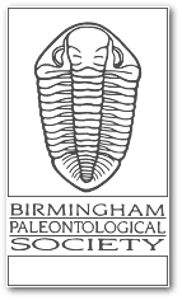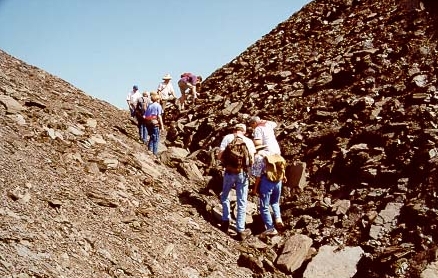Department of Physics and Astronomy
University of Alabama
Tuscaloosa, Alabama
The New River Mine is a surface mine which was spotted by Jim Lacefield in early February this year, and shortly thereafter Jim and I scouted the site out. As expected, the site included plant fossils, but one difference compared to other sites that Jim noticed was an abundance of fossils of Artisia, the pith of the gymnospermous tree known as Cordaites. The only other sites where I have seen Artisia fossils are the Kimberly surface mine (see BPS report for May 29, 1999), and another mine near Eldridge that the BPS visited with Wayne Canis's class in March 1998.
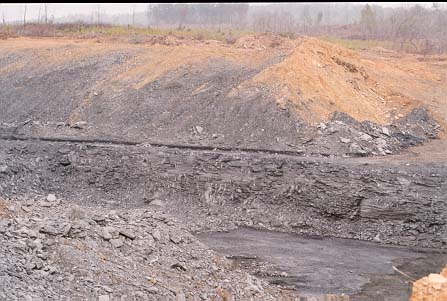 |
| Figure 2 View of a rock wall roughly on the east side of the site. |
| Bruce Relihan was the first to find an interesting specimen of Artisia, shown in the picture here. Artisia is characterized by horizontal ridges along the pith, which can be found in cast form as well as impressions, much like a Calamites pith. The specimen Bruce found appears to be either an impression or a highly flattened cast. The ridged area is framed by a larger area obviously affected by the plant. This frame must indicate the true extent of the trunk. | 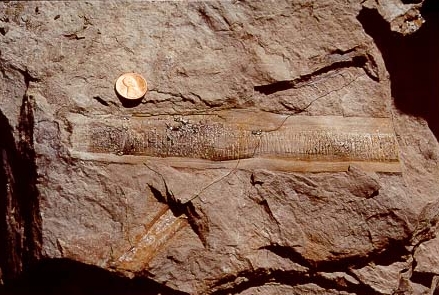 |
| Figure 3 Artisia specimen found by Bruce Relihan. |
| Other types of fossils found were bark impressions of arborescent lycopods. I show pictures of two different types here. One appears to be of the type Lepidodendron obovatum, with very large leaf scars. I am not certain about the type of the other piece shown, other than it is also likely to be a Lepidodendron. | 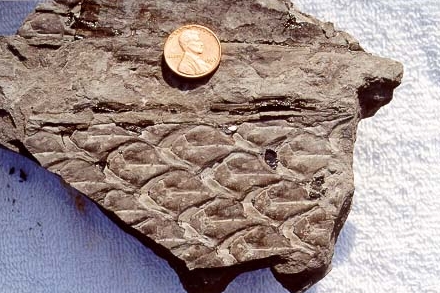 |
| Figure 4 Bark impression of Lepidodendron obovatum, with large, distinct leaf scars. |
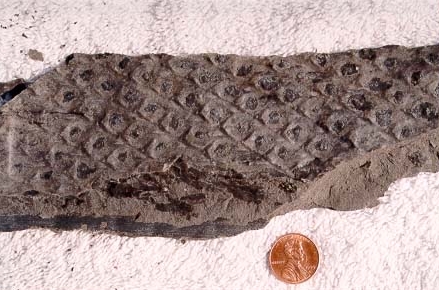 |
| Figure 5 Bark impression of another likely type of Lepidodendron. |
| The last pieces I illustrate are ones I found in February during my scouting visit with Jim Lacefield. One appears to be a mostly unflattened cast of a branch of Calamites. The piece shows 15 strong, indented nodes, and I must say it resembles a petrified tootsie roll! I am not sure of the species of this Calamites, but I did find a type of Calamites at this site that I was able to identify. I found highly compressed cast pieces of what I think is Calamites suckowi, one of the more common species of this genus. | 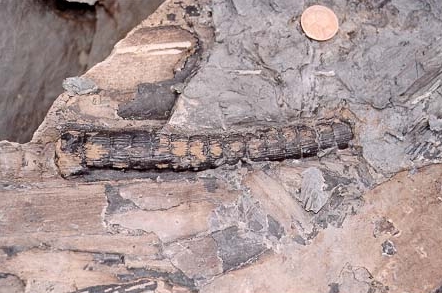 |
| Figure 6 Cast fossil of a branch of Calamites, with 15 clear nodes. |
After a couple of hours of searching with limited results, trip attendees decided to return to Union Chapel Mine, about 30 miles east of the New River site. Union Chapel Mine is so rich that it continues to yield good specimens even though many people have visited the site the past 4 months. It is a good site to fall back on when other sites do not live up to expectations. See the reports for January 23, March 19, and May 28, 2000 for information on this mine.
